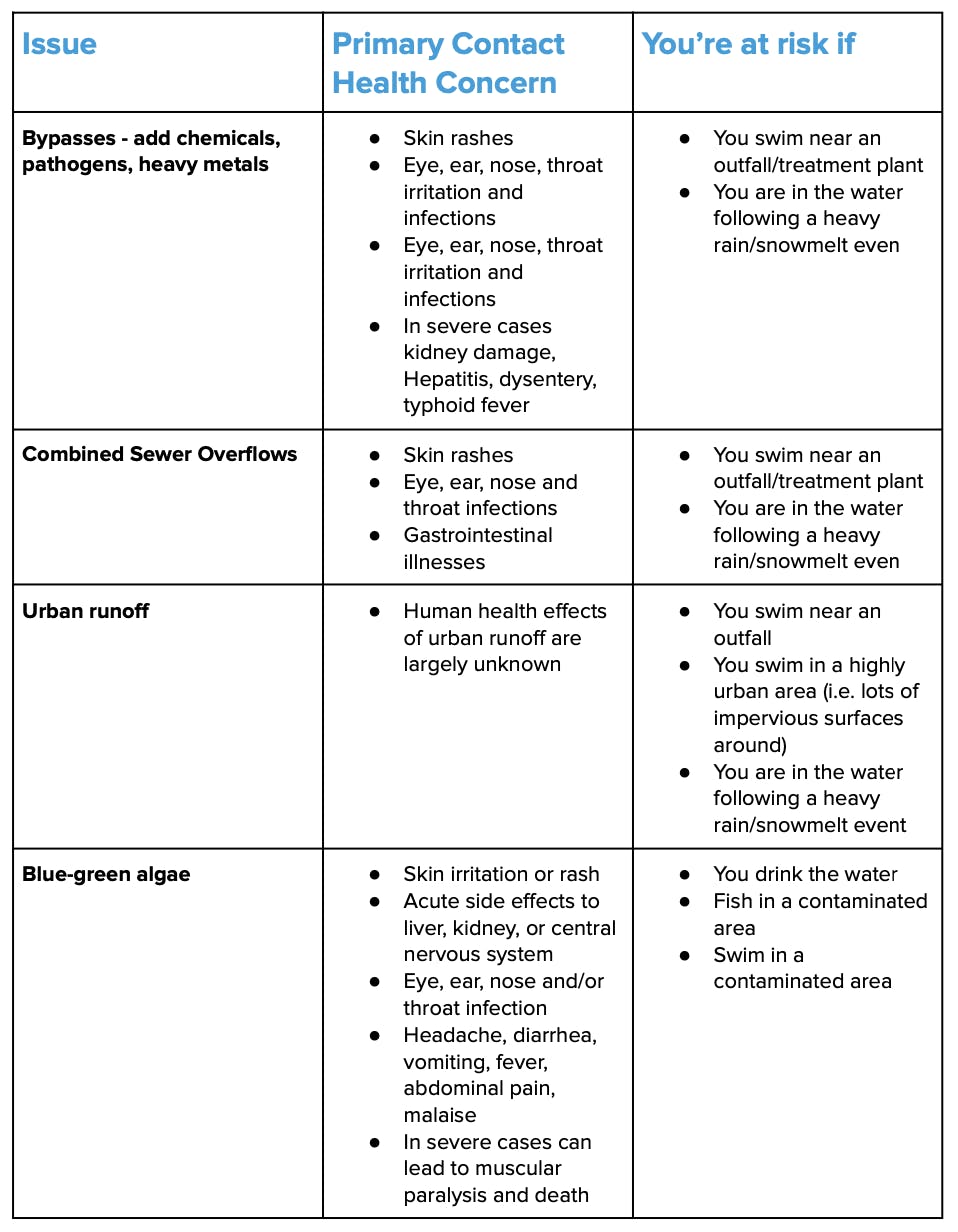Do certain recreational water activities put you more at risk for illness and infection than others? Yep.
Your risk of getting sick increases according to the amount of contact your body has with the water. Risks also increase when your ears, nose, eyes and cuts are exposed to contaminated water, because bacteria easily enters the body through openings.
Recreational water activities are defined by the amount of contact you have with the water. Primary activities have a high degree of contact with water. Whereas, secondary activities have a lesser amount of water contact. It is important to keep in mind that both can put you at risk of waterborne illnesses.
What is a “primary” contact recreational water activity?
Primary contact recreational water activities are officially defined as activities in which your whole body or your face are frequently underwater, wetted by spray, and where you are likely to swallow water.
Swimming, surfing, waterskiing, windsurfing, diving, bathing, tubing, water play by children, and any other water activities where there is a high degree of bodily contact with the water are considered “primary contact activities.”
Primary contact activities put you most at risk for illness and infection, because you are in the water longer, getting wetter and swallowing more water. For this reason, international recreational water quality standards correspond to the risks associated with primary contact recreational water activities.
3.5 million people per year get sick enough to throw up or get diarrhea after splashing in natural waterbodies containing harmful bacteria and pollution, according to the U.S. Environmental Protection Agency
On average, you have an estimated 5% chance of getting sick after swimming in a natural water source. The risk of illness increases when the level of contamination in the water rises.
The EPA suggests that recreational water areas should be monitored at a minimum of once per week. Increased monitoring should take place at beaches that are used by a lot of people because swimmer-to-swimmer illness transmission is a concern. Crowded beaches have higher rates of swimming-related illnesses.
Who is most at risk?
Anyone can be affected from exposure to contaminated water, but small children, the elderly, and people with compromised immune systems are the most vulnerable.
In general, you increase the risk of illness and infection the more your head and body is submerged in water and the longer you are out on the water.
What are the health risk associated with primary contact recreational water activities in contaminated water?
When fecal bacteria is found at the beach, it is a sign that the water is contaminated with human/animal waste and it may contain pathogens, viruses and parasites, as well as chemicals, heavy metals, and other contaminants.
Primary contact with water containing high levels of fecal bacteria and other pollutants can lead to disease, infection, and rashes.
Inhaling contaminated water can lead to respiratory illnesses, and infections in the eyes, ears, and nose.
Bacteria can enter the body through an opening, such as your ears, nose, eyes, and cuts and scrapes in the skin.
Skin contact with contaminated water can cause rashes and other skin problems. For example, Swimmer’s Itch is a skin rash caused by an allergic reaction to certain microscopic parasites that can be found in fresh and marine water.
Swallowing contaminated water can lead to a gastrointestinal infection such as nausea, diarrhea and vomiting.
In extreme cases, more serious diseases and illnesses may also be contracted from heavily polluted waters including typhoid fever, hepatitis, gastroenteritis, and dysentery.
In addition to fecal bacteria, water can become contaminated from sewage bypasses, combined sewer overflows, urban runoff, plastic pollution, and blue-green algae blooms. The following table outlines some of the side effects of swimming in water where these issues are present.


